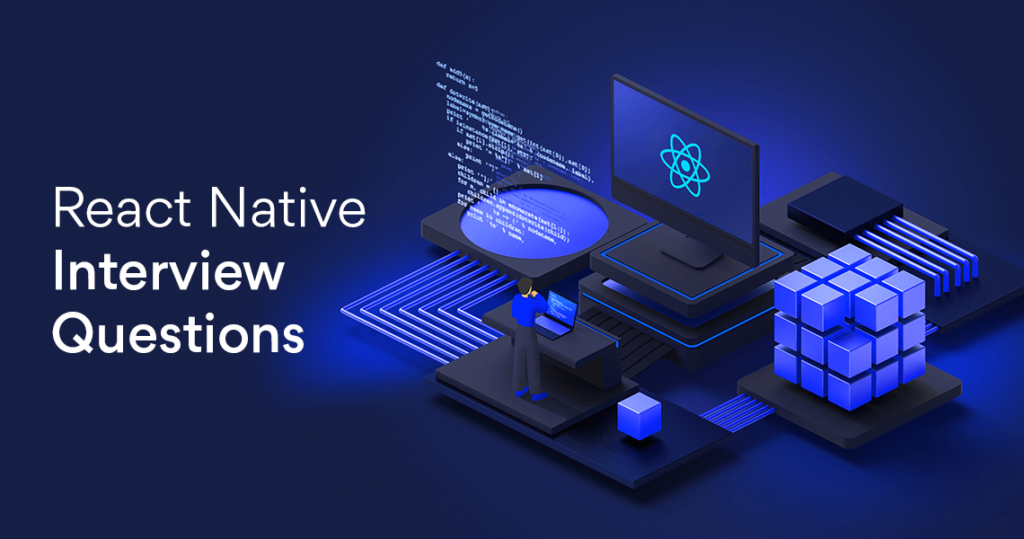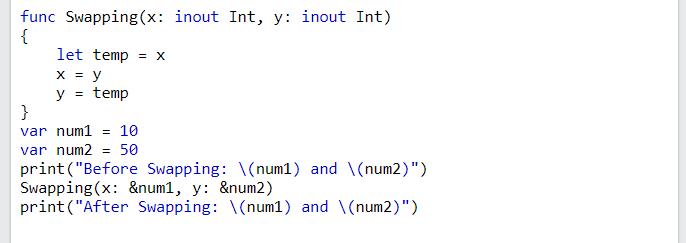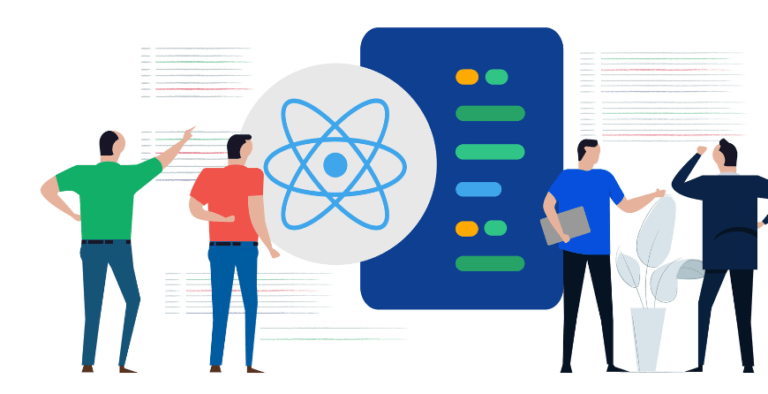iOS Interview Questions

Outline
This comprehensive guide has three sets of important iOS questions and answers: Beginners, Intermediate and Advanced.
Read, learn, practice and prepare yourself with these sure-shot iOS interview questions to crack your next interview for an iOS developer job.
Introduction - iOS Interview Questions and Answers
We have compiled the top iOS interview questions and answers for you to prepare for your next interview. We have divided the questions into three categories based on experience.
- iOS Interview Questions for Beginners
- Intermediate iOS Interview Questions
- Advanced iOS Interview Questions
We have selected the most asked iOS questions in any interview. Each of these questions represents some core insights on the iOS programming language.
But first let’s discuss – Why is iOS one of the top programming languages? Why is there high demand for iOS developers? What makes iOS development a competitive job?
Because iOS runs on Apple’s mobile devices, it has the same illustrious lowercase “I” as the firm. iPhones, iPads, and other gadgets are run on iOS. Therefore, whether they work directly for Apple or a third-party tech company, top iOS developers are in charge of creating applications for Apple devices.
Zippia’s extensive research and analysis found the following statistics related to iOS jobs.
- Over 5,786 iOS developers are employed in the country at the moment.
- 86.2% of iOS developers are men, compared to 13.8% of female developers.
- An employed iOS developer is typically 39 years old.
- White people make up the majority (56.0%) of iOS developers, followed by Asians (287.%), Hispanics or Latinos (7.2%), and Black or African Americans (5.1%).
- Atlanta, Georgia, is where iOS developers are most in demand.
- San Francisco, California has the highest average yearly wage in the US at $140,342.
- Women made 93% of what men did in 2021.
- The best state to live in for iOS developers is Oregon.
- Compared to private organisations, public companies employ 61% more iOS developers.
The above statistics prove that iOS is indeed one of the most sought-after programming languages.
Now, let’s learn top interview questions on iOS. Let’s start.
iOS Interview Questions for Beginners
1. Define ARC?
A compiler-level feature called ARC (Automatic Reference Counting) outlines the procedure for controlling an object’s lifetime in objective-C.
2. What is Bundle ID?
Both iOS and OS X programmes use the bundle ID. Every iOS application is defined by it specifically. Any update to your programme can be identified by a bundle identifier.
3. What is Cocoa/Cocoa touch?
It is used to create software codes that operate on iOS and are compatible with the iPad and iPhone. The objective-C programming language is used to create Cocoa Touch, which has a distinct set of graphical control elements than Cocoa.
4. Name the methods to achieve concurrency?
The following methods used to achieve concurrency are:
- Dispatch queues
- Threads
- Operation Queues
5. Define iBeacon?
Mobile apps may now respond appropriately to signals from beacons in the real world thanks to iBeacon technology. There are two components in it: a broadcaster and a receiver.
6. Define Method Swizzling?
You can create code that can run either before or after the original method by using the Method Swizzling technique for altering an existing domain’s implementation.
7. Explain layer objects in Swift.
Layer objects in Swift are data objects that represent the visual data on a UIView. Layer objects are used by views to render their content. To perform sophisticated animations and other features, we can add new layer objects to the interface.
8. Explain the Adapter Pattern?
An adapter allows classes with unfavourable interfaces to function in a sink, wrap itself around an object, and present a common interface to communicate with that object.
9. Which JSON framework is supported by iOS?
iOS has the SBJson framework. To make handling JSON simpler, SBJson provides configurable APIs and extra control.
9. What is the difference between KVC and KVO?
Key-Value Coding, often known as KVC, enables users to access an object’s properties. Instead of knowing the property names statically during development, Swift’s KVC framework enables object properties to be accessed at runtime with strings. KVO, or key-value observing, is an acronym. It is employed for tracking changes in programme state.
Intermediate iOS Interview Questions
As an iOS developer, with experience you will be able to answer iOS interview questions for freshers with much ease. In this section we have collected some iOS tricky interview questions for you. This section will help you with the exact kind of Intermediate iOS Interview Questions that you may face in your job hunt.
1. Explain the Architecture of iOS
iOS has a layered architecture. The iOS Architecture is made up of four layers, each of which offers a programming basis for creating software that runs on top of the hardware. Communication will be improved between the Application Layer and the Hardware Layer. A lower-level layer provides all programmes’ essential services, whereas an upper-level layer handles visuals and user interface (also known as a high-level layer).

The Core OS (or Application) Layer is the bottom layer of the iPhone OS stack and sits directly on top of the device hardware. This layer offers low-level networking, access to external accessories, and other functions in addition to the fundamental operating system services including memory management, processing of file systems and threads, and memory management.
Service Layer: Its goal is to create the services that users or higher layers require. Block objects, Grand Central Dispatch, in-app purchases, and iCloud storage are a few of its other crucial features. The implementation of ARC Automatic Reference Counting has improved the service layer.
Media Layer: It manages media types like graphics, audio, and video. We will be able to utilise the entire system’s audio, video, and graphic capabilities thanks to the media layer.
Cocoa Touch Layer: Another name for the application layer is the Cocoa Touch Layer. This is where frameworks are created while building apps. It also acts as the user interface for the operating system for iOS users. This encompasses the capacity to move and touch.
2. What distinguishes atomic qualities from nonatomic ones, please? What is the default for properties that were synthesized?
Atomic Property: Since it is set by default, a valid value will always be returned by the getter or set by the setter. The getter/setter of a specific property can only be accessed by one thread at a time, and all other threads must wait until the first thread releases the getter/setter. Despite being thread-safe, it is slow since it makes sure the procedure is finished entirely.
Non-Atomic Property: Non-atomic attributes allow for simultaneous access by many threads to the getter and setter methods, which increases the risk of inconsistent values. They offer improved access but no assurance of a profit.
3. What various iOS application states are there?
An iOS application experiences a number of states as it is being used. The lifecycle state of an application refers to each of these states. The five possible states for an iOS app are listed below:
- Not running: An application that is in the Not Running state has either not been started by the user or has been stopped by the operating system.
- Inactive: While the app is leaving or entering its active state, there is a small period of idleness. It is currently not ready to take user input or events despite being operating in the foreground. This indicates that the application is currently inactive.
- Active: The Active state indicates that the application is receiving events and is active. The User Interface is useable in this mode, which is frequently used by foreground apps.
- Background: The user interface of the application is hidden during this phase, but the iOS system still processes it in the background. Typically, applications go through this stage before being suspended.
- Suspended: The application is now operating in the background, however it is not executing any code. It does, however, remain in my mind. The system may destroy programmes that are in the suspended state without warning when memory is limited.
4. Explain what is GCD (Grand Central Dispatch) in iOS.
Grand Central Dispatch (GCD) is a low-level API that allows users to manage threads in the background while concurrently running several jobs. Grand Central Dispatch is Apple’s approach to incorporating concurrency and parallelism into iOS applications, allowing for the simultaneous execution of several background processes without interfering with the main thread. It was added in iOS 4 to do away with the tiresome procedure of task execution in serial.
Advanced iOS Interview Questions
This section contains some advanced interview questions on iOS. This section also explores a few iOS coding Interview questions. You may practice the common iOS programs which the interviewer often asks.
1. Explain Objective-C in OS.
Apple has been using Objective-C as an object-oriented programming language since the 1990s. The benefits of the earlier languages C and Smalltalk are combined in this language. It offers object-oriented features and a dynamic runtime environment as a superset of C.
Features:
- In Objective C, meta classes are automatically created and managed during runtime.
- Dynamic typing and static typing are both supported.
- It is easy to understand.
2. What do you mean by lazy property in iOS?
Properties that are lazy don’t compute their initial value until they are utilised for the first time. When the word “lazy” is used before the declaration of a stored property, it denotes that the property is lazy. You can do this to put off initialising saved properties. This might be an excellent technique to simplify your code and eliminate extra labour. A lazy variable can be an excellent solution when a piece of code is expensive and unlikely to be called repeatedly.
3. What do you mean by lazy property in iOS?
Properties that are lazy don’t compute their initial value until they are utilised for the first time. When the word “lazy” is used before the declaration of a stored property, it denotes that the property is lazy. You can do this to put off initialising saved properties. This might be an excellent technique to simplify your code and eliminate extra labour. A lazy variable can be an excellent solution when a piece of code is expensive and unlikely to be called repeatedly.

We are unsure of the value personalizedgreeting should have, as evidenced above. We must wait till this object is initialised in order to determine the appropriate welcome for this individual.
4. What are generics in swift and write its usage?
Generics are a key component of Swift, and a sizable portion of the standard library is written in generic code. For instance, the ‘Array’ and ‘Dictionary’ types in Swift are examples of generic collections. You can write reusable, adaptable types and functions that work with any data type using generic code. Code can be written that is clearer and less detailed about the underlying data kinds.
Example:

Output:

To swap numbers, we wrote a function called Swapping() in the example above. It requires the int type parameters x and y. The values of x and y are swapped after the swapping, as can be seen in the output.
5. How can you implement storage and persistence in iOS?
Dynamic dispatch, put simply, is the process by which a programme determines at runtime which implementation of a specific method or function it needs to call. Dynamic dispatch decides whether to invoke the subclass implementation of the method or the parents when a subclass overrides a method of its superclass.
Conclusion
We hope these iOS interview questions and answers will be of great assistance to you throughout the process, whether you’re a developer getting ready for an interview or a hiring manager looking for the best applicant.
Remember that the hiring process involves more than just technical expertise. To ensure that you land a high paying iOS developer job, both previous experience and soft skills are crucial.
A lot of the iOS interview questions are open-ended, so keep that in mind. Interviewers are interested in your reasoning, not just the answer you memorised. Always be ready for follow-up questions regarding how you arrived at your answer. Describe your thought process.
Good luck with your upcoming iOS interview! You can go through our iOS developers jobs here.





